Grace Cassidy explores the history of corsetry, as it makes a return to modern day fashion and asks whether or not we’ve misunderstood the garment.
Bridgerton has changed the world as we know it, or at least it has the corsetry world.
With 82 million households tuning in within the first month of release, the show quickly became Netflix’s biggest series debut and not only hooked viewers with the scandalous storylines but also sparked many viewers obsession with what is known as ‘Regencycore’.
There is absolutely no denying the ‘Bridgerton’ effect which has seen Ebay searches for corsets soar 39% since it was aired in December.
“It’s brought them out of the darkness so to speak” says corset designer Aimee Veitch.
However, corsetry as we know it today has come a long way since the Regency era and over the years, we have seen a shift in society’s attitude towards the garment.
The corset has slowly made its way out from underneath women’s clothing to become outerwear that modern women want to show off.
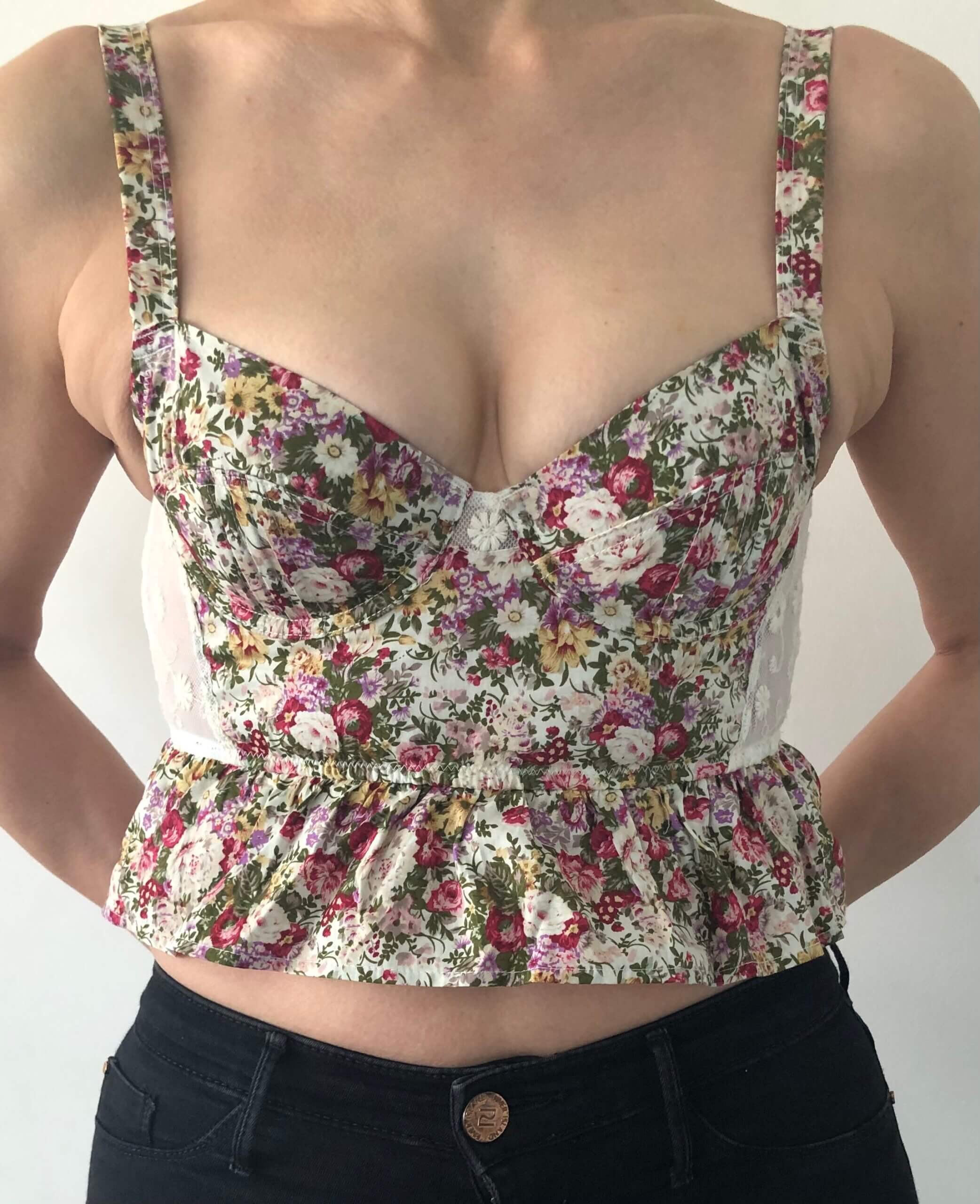
2021 Urban Outfitters Corset Top
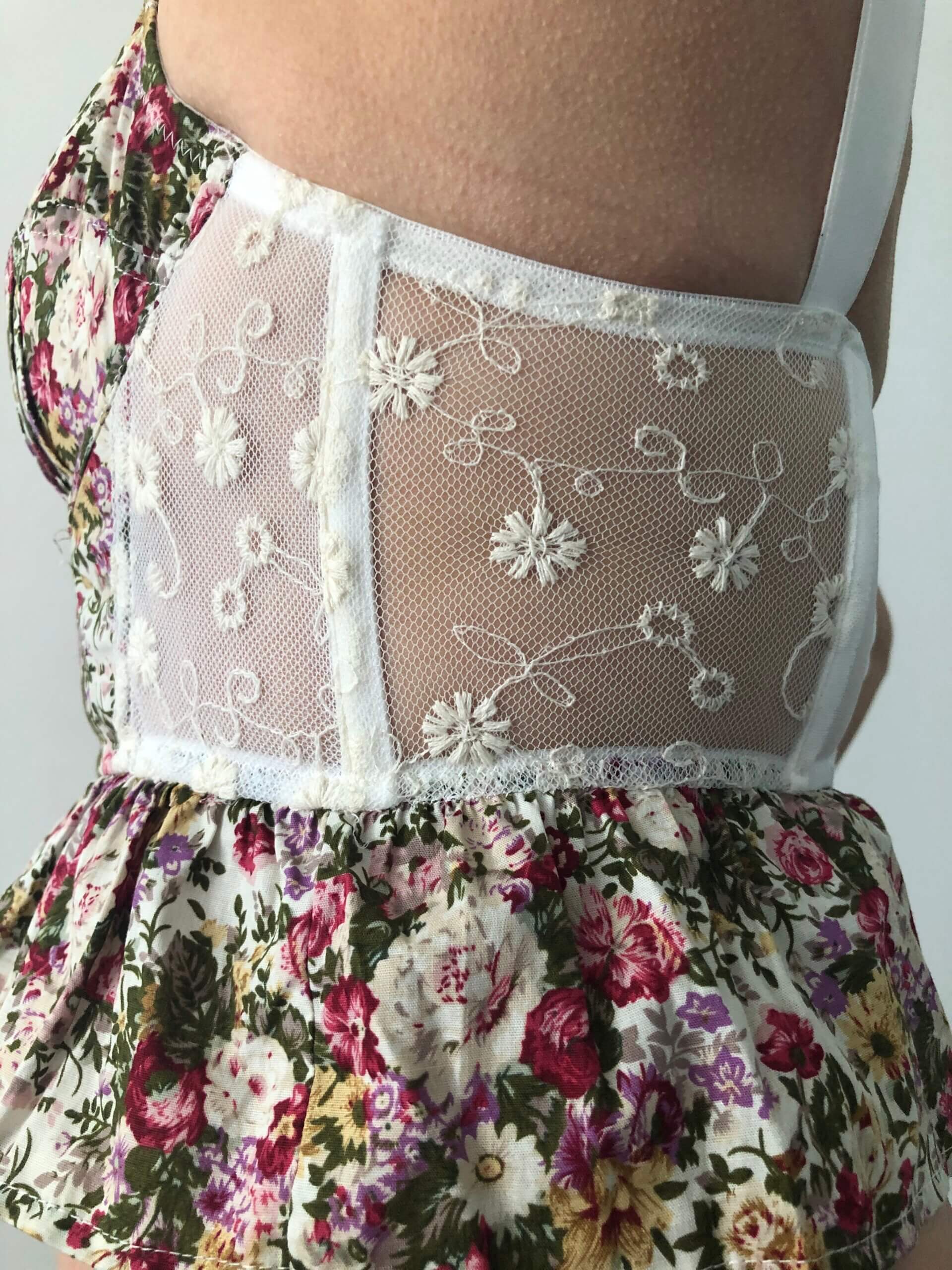
Although our modern-day view of corsetry may be changing, for many of us our main exposure to historical corsetry still remains through TV and film and usually involves a scene in which a woman is being tightened into her corset. A scene which Bridgerton viewers will be all too familiar with.
Fashion historian Lucy Adlington points out that often what we are watching is “a load of hooey!”
When it comes to Bridgerton she explains: “there’s no way a regency woman needed to wear a waist corset because the shape was for a column, but it looks good on telly and gets people talking.”
For most of us this representation forms the basis of how we perceive corsetry and is the imagery we immediately associate with the garment however, it can be easy to forget that the costumes we are seeing aren’t necessarily historically accurate but instead play into the popular myths surrounding corsetry.
The biggest being that all corsets are designed to be pulled in tight.
Of course, at one time in history, the 19th century in particular “there was a heyday for the small waist”, but that has led to a lot of us believing that all corsets throughout history were worn in this way, which is simply untrue.
“Corsets evolve with fashion” Aimee Veitch tells us.
“The techniques stay the same, but the style evolves.
“You’ve got the Victorian style and the Edwardian for example, but you’ve also got different shapes such as the hourglass, the conical which is more of a triangular shape, the pipestem which goes straight down in the rib area and the S curve.”
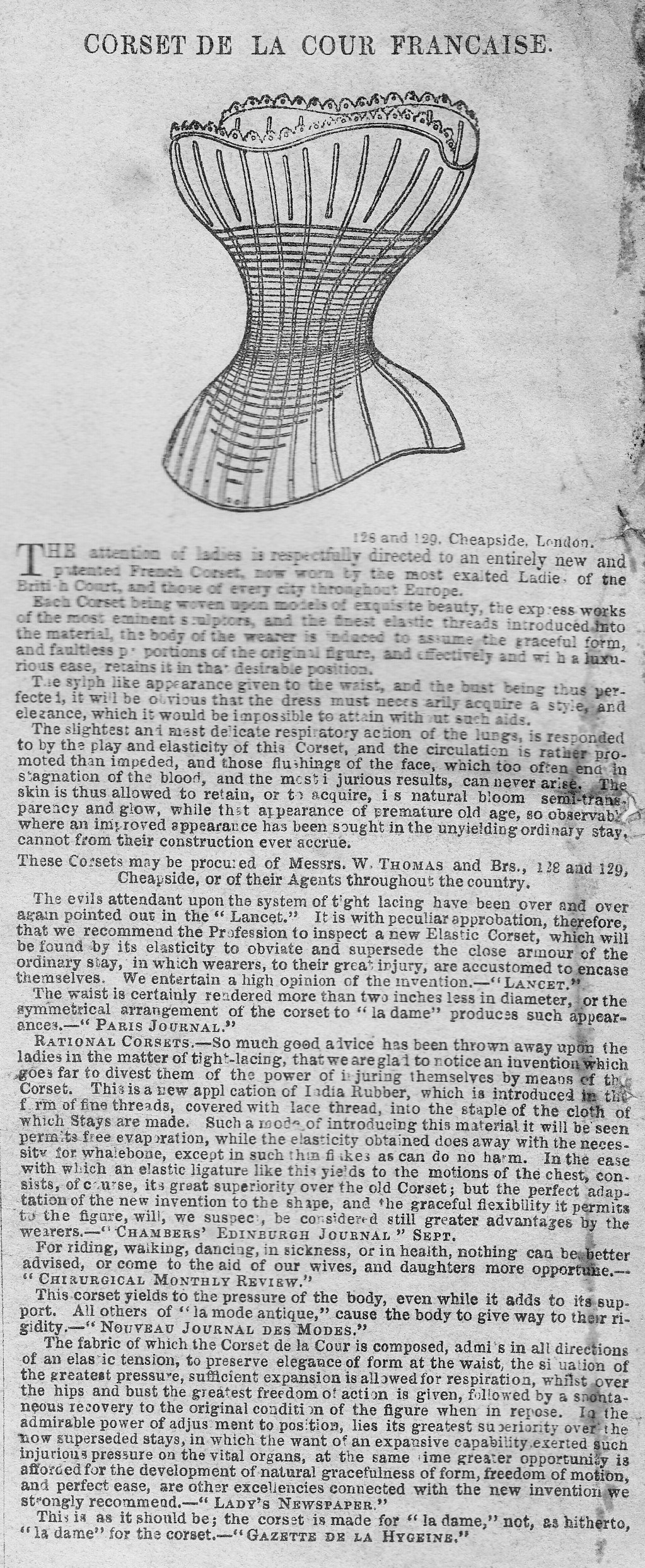
1849 corsetry advert in newspaper. Photo credit: Lucy Adlington, History Wardrobe
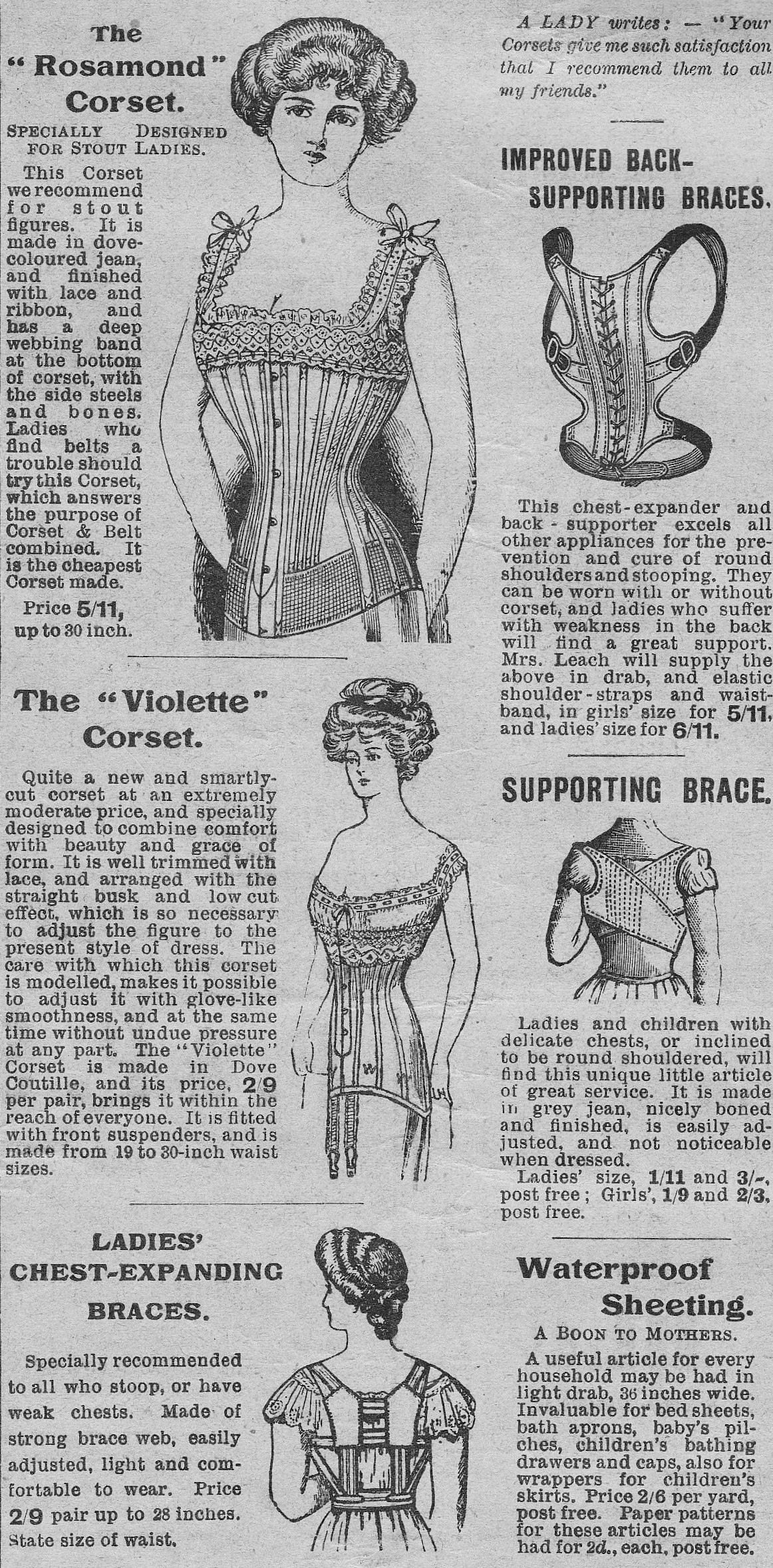
Edwardian corsetry, photo credit: Lucy Adlington, History Wardrobe
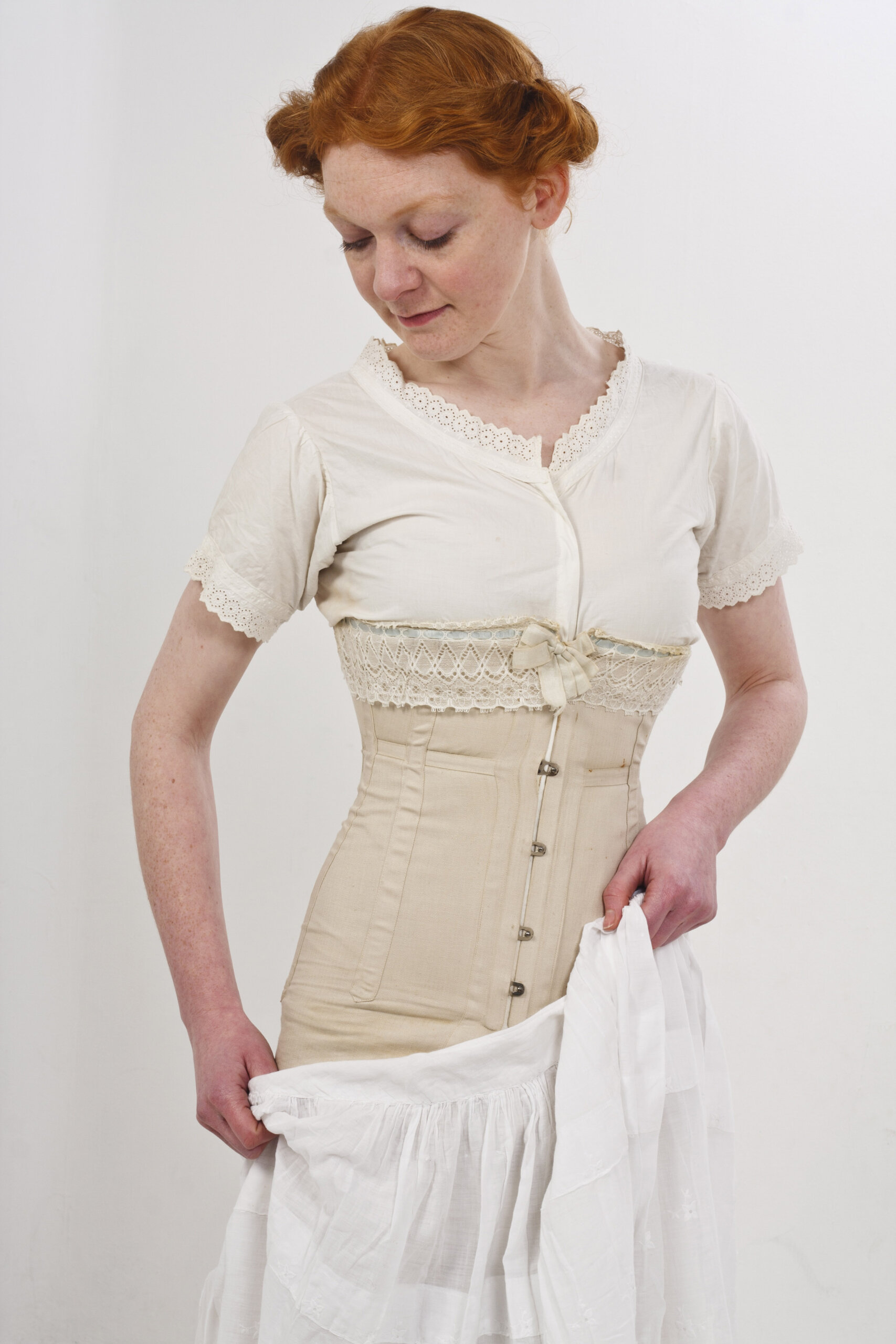
Corsetry from the First World War, photo credit: Lucy Adlington, History Wardrobe
The image we see all too often on TV is actually a practice known as tight lacing which Lucy points out “most women in history are not going to go anywhere near.”
Lucy explains: “tight lacing is a practice where you increasingly make it so the corset gets tighter and tighter, beyond what you can bear.
“Normally when you put a corset on it has this period where you put it on and it breathes a bit and you get used to it, but tight lacing is an actual specific fetish, or practice where it’s done to the maximum point of lacing.
“Most women in history are not going to go anywhere near tight lacing, it’s crazy, but it’s what people associate with corsets.”
Tight lacing is also where the speculation of the health impacts associated with corsetry comes from.
For centuries doctors have been divided over whether or not tight lacing had the ability to deform your bones, displace your internal organs, hinder with breathing and digestion and in some extreme cases cause death.
Although it was a small minority of women partaking in this trend, they have had such a big impact on the representation of corsetry throughout history.
“Corsetry is a lot more interesting than saying in the past it was all bad and women fainted, they’re the absolute extremes and I think we need a clearer view of what corset wearing meant to women in history” says Lucy.
“To say all Victorian women found them uncomfortable and all women were oppressed by them, doesn’t do a service to the immense variety of different women’s experiences of wearing corsetry.
“I know we tend to think of corsets as really uncomfortable, but actually they’re not.
“Corsets aren’t meant to be an instrument of torture.”
This is also something Aimee, who has been making corsets for over 10 years, pointed out.
“They were only torturous when they were ill fitting or when inferior materials were used.
“If you use plastic boning, it tends to fold in half at the waist so you end up getting a crease in the waist and if the corset isn’t made for your body shape or the style doesn’t suit your body shape then it can be uncomfortable to wear.
“I often get asked how do you breathe? and my answer is, well if I couldn’t breathe, I wouldn’t be here!”
But where do these controversies come from if actually corsetry wasn’t as bad as we believe it to be?
“There was controversy in the past, but I think a lot of it is us looking back and judging the past and ridiculing the past and simplifying the past and it’s a lot more complex and nuanced than that” says Lucy.
“The more myth busting the better. It helps give us a more well-rounded view of women in the past rather than dismissing them all as slaves to fashion or idiots who just wanted to harm themselves or mindless bodies.
“It just infantilises women to say they were all daft in the past for wearing them. Especially as for many centuries, corsetry was your basic foundation garment for women in the west and so for a lot of women, it was absolutely normal to wear.
“The word corset actually comes from a French word for body, it’s just your body that you put on in the morning.”
